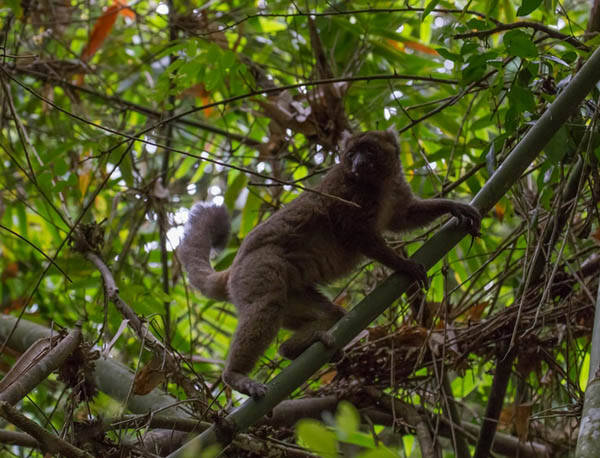Hapalemur simus
IUCN
LCBasic Information
Scientific classification
- name:Hapalemur simus
- Scientific Name:Hapalemur simus,Greater Bamboo Lemur
- Outline:Primates
- Family:Lemuridae lemur
Vital signs
- length:40-42cm
- Weight:2.2-2.5kg
- lifetime:No verification information
Feature
It is the largest lemur in the genus Lemur.
Distribution and Habitat
The Platyrhynchos is endemic to Madagascar, with fossil evidence suggesting that it was once common in the northern, central, and eastern regions of the island. However, today, the species is restricted to Ranomafana National Park and surrounding areas in southeastern Madagascar, and to Andringitra, near Onderuzou, where it may also be present, but data suggest it is very rare.
Platyrhynchos live primarily in Madagascar's humid rainforests and bamboo forests, with a very small distribution range.
Appearance
The broad-nosed tame lemur is the largest lemur in the genus Tame Lemur, with a body length of 40-42 cm, a tail length of 45-48 cm, and a weight of 2.2-2.5 kg. The fur on the back is olive brown with gray to brown guard hairs, and the lower body and tail are yellowish brown. The cheeks are black, the muzzle is very short, the eyebrows, cheeks and throat are golden, and the furry short ears are moon-white. Generally males and females have a similar appearance, but females tend to be slightly grayer on their upper bodies. However, more recent individuals of this species have significantly different dark golden-red fur and no ear hairs. Their cheeks have a rounder appearance than other family members, and they have longer tails.
Details
The Greater Bamboo Lemur (scientific name: Hapalemur simus) is the largest lemur in the genus Hapalemur.

The natural forests of Madagascar's 25 bamboo species are all less than 20,000 square kilometers, and as many as 10 bamboo species have natural forests less than 2,000 square kilometers. The presence of platyrrhines has become a symbolic feature of the wide distribution of bamboo in natural forests. Different parts of bamboo are the main food source for these lemurs, and they also eat flowers, fruits and leaves of plants. Platyrhynchos basically only eat bamboo meat, and almost 98% of their diet is composed of this low-energy food, especially giant bamboo (Cephalostachium viguieri).
Platyrhynchos mate in July and August every year, and the female monkeys have a gestation period of about 138 days. They give birth in November and December, with 1-2 babies per litter. The mother monkeys will hide the babies in a secret place for the first two weeks after they are born. After 6 months, the babies are weaned and live with the tribe. The females leave the group and find another home at the age of 3.
Living environment Due to land reclamation, plants are cut down and burned, especially the main food of platyrhynchos, bamboo, is becoming less and less, which seriously threatens their survival. According to an estimate in 1994, there were only 1,000 left. It is endangered.
Listed in the 2013 Red List of Endangered Species of the World Conservation Union (IUCN) ver 3.1 - Critically Endangered (CR).
Protect wild animals and eliminate game.
Maintaining ecological balance is everyone's responsibility!








